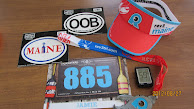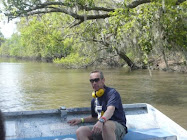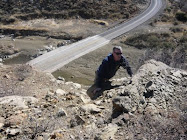
Swim: Speed Shortcuts
The key to a good swim falls into two basic categories: technique and preparation.
As one of three disciplines, the need for a good swim section is obvious. It doesn’t only put you in contention with the main competitors, it also makes you feel like you’re competing – rather than just taking part – in the event. It’s no secret that, for most triathletes, swimming presents the greatest challenge in the quest for speed and efficiency, and if you’re one of the many who are continually frustrated by under-performing in the swim leg, you need to read on.
Swimming need not be your Achilles heel – it’s simply a matter of understanding a couple of main principals. These principals can be broken down into two key areas and dealing with them can lead to visible improvements in your swim:
Key area 1 Understand how you approach your swimming. This allows you to make a huge saving on the energy you exert.
Key area 2 Understand the important points of preparation. This enables you to get the best return from your training time.
Key area 1
Your swim technique can be broken down into elements. Working on each of these will see your swim times plummet.
1 Effort
It’s not about how much force or effort you apply to your stroke, but more about containing and controlling your movements to make them smooth and fluid. Think of 80% effort to yield 100% speed, and remember: it’s likely that 100% effort yields only 80% speed.
2 Rhythm and timing
Distance swimmers who consistently perform well appear to be almost metronome-like in their movements. Emulate them by trying to develop a smooth, relaxed rhythm to your stroke. Avoid jerky movements; don’t snatch the stroke, ease yourself into each one, and control the stroke timing by adopting a regular breathing pattern. Breathing bilaterally (to either side) will help you keep an even rhythm.
3 Balance
Avoid any unnecessary movements; imagine you’re sliding through the water and remember that there is a slight body rotation (approximately 45º) to both your left and right sides while performing the stroke. Your head position affects your body position considerably. Try to keep your head quite low in the water – most triathletes hold their heads too high. Use your legs gently to help maintain balance.
4 Feel for the water
This all-important aspect is greatly overlooked or misunderstood by most triathletes. Feel for the water is a term used by coaches when a swimmer is moving well with little effort. This is a combination of effective use of the leading hand and arm at the front of the stroke, providing a good hold on the water, and the backhand completing the stronger push phase. Just as the push phase is completed, the leading hand begins a relatively slow pull, accelerating proportionately toward the back of the stroke. Avoid rushing the front-end of the stroke. It’s important to maintain a high elbow during the underwater pull phase of the stroke as this helps to you keep good mechanical leverage in the arms.
5 Streamlining
By remaining in a streamlined position throughout your stroke cycle, you’re able to reduce your frontal resistance considerably. Think of your body posture as elongated. If you imagine yourself standing on your tip-toes while swimming, you won’t be far wrong. By maintaining a streamlined position, you’ll find that you’re swimming at least a second faster per length (25m) for the same effort. If that doesn’t seem much, then think of it as a minute faster over 1,500m.
Key area 2
How to improve your preparation. Knowing what to expect and being confident you can deal with it are crucial to a good performance. This area looks at how you can ensure you’ll be ready for anything.
6 Warming up properly
It seems such a trivial issue but building a good warm-up into your sessions will ensure your better placed to make the most of the main thrust of your training. An example of a good warm-up, which can be adjusted up or down in volume to suit, might be:
Warm-up (600m)
150m front crawl then 50m back crawl.
100m front crawl then 100m back crawl.
50m front crawl then 150m back crawl.
Build set (300m)
50m front crawl (build to a fast finish), 20secs recovery.
2 x 100m drill (single-arm/catch-up), 20secs recovery.
50m front crawl with a fast first 15m, 20secs recovery.
7 Pace control
Use the pace clock or time yourself regularly on repeat swims. This gives you a clear perspective on how well you’re performing and allows you to adjust your effort to control your speed. You’ll learn to balance your effort against efficiency, given that you’re getting regular feedback on your times.
8 Race-pace preparation
If you’re preparing for a particular race, whether a sprint event or an Ironman, try breaking the distance down into sections and aim to perform them at your intended race pace during training.
Here’s an example of a race pace set working toward a 400m sprint triathlon:
Main set (800m plus recovery swim)
2 x 50m sprint with 20secs recovery.
1 x 100m at target race pace with 20secs recovery.
1 x 200m at target race pace with 20secs recovery.
Note: repeat this set twice (add times from each set and compare). Also, after the first set, add in a recovery swim before starting the second set.
9 Stroke efficiency
An efficient stroke is one where you get an excellent return in both distance travelled and speed gained. To check for good stroke efficiency you need to count the number of strokes you take per length against the speed you swim the length in. As a rule of thumb, base your calculations on one stroke per second. So, if you’re swimming 25m in 30 strokes and 30 secs, to swim with more efficiency you’d need to reduce the number of strokes along with the time taken. The optimum for most age-group triathletes would be around 20 strokes and 20secs. A great stroke efficiency set worth trying is 8 x 50m repeats, adding your time to the number of strokes taken for each 50m swim. Reduce the total score for each 50m on numbers 1-4 and start again on numbers 5-8.
10 Warming down properly
Swimming easy at the end of training really does help put your swimming technique back together, especially after a harder set. Easy swimming also plays a very important part in active recovery and, if done correctly, will help to remove the toxic waste products that have built up in your muscles and leave you feeling stiff and sore after.
An example of a recovery swim at the end of an intense training session is:
3 x 100m front crawl easy, with 20secs at a heart rate approx 50/60 beats below max (bbm).
6 x 50m front crawl easy, with fast strokes at the start of every 50m. Have 20secs recovery.
3 x 100m front crawl easy, with 20secs recovery.
Note: 30secs after completing the recovery swim, check your heart rate (via heart rate monitor or placing two fingers on your wrist and counting pulse for 6secs, then multiplying by 10), and if it’s above 100bpm, add another easy swim to bring it down. British Swimming are currently using a similar protocol and it’s proving to be very effective as a recovery set.
In summary
All these points give you an overview to both your technical approach and also your preparation for training. Don’t underestimate the value of keeping swimming simple. Making things complicated leads to confusion and frustration.
Try to keep things as basic as possible and learn to relax in the water. Tension and chaotic strokes lead to early fatigue and limitations to technique. Relaxed, rangy movements not only produce faster swim times but will also drastically reduce your energy expenditure. Enjoy your pool time. [the above is a contribution by Mischelle Stevens)



























































2 comments:
Wow, now your'e blogging!!!
Swim Gold is a great tool for measuring technique improvement, Here's the post on it:
http://mytriathlontraining.com/2008/04/07/swim-golf-is-a-great-way-to-focus-on-stroke-technique/
Good blog - keep it up!
Post a Comment